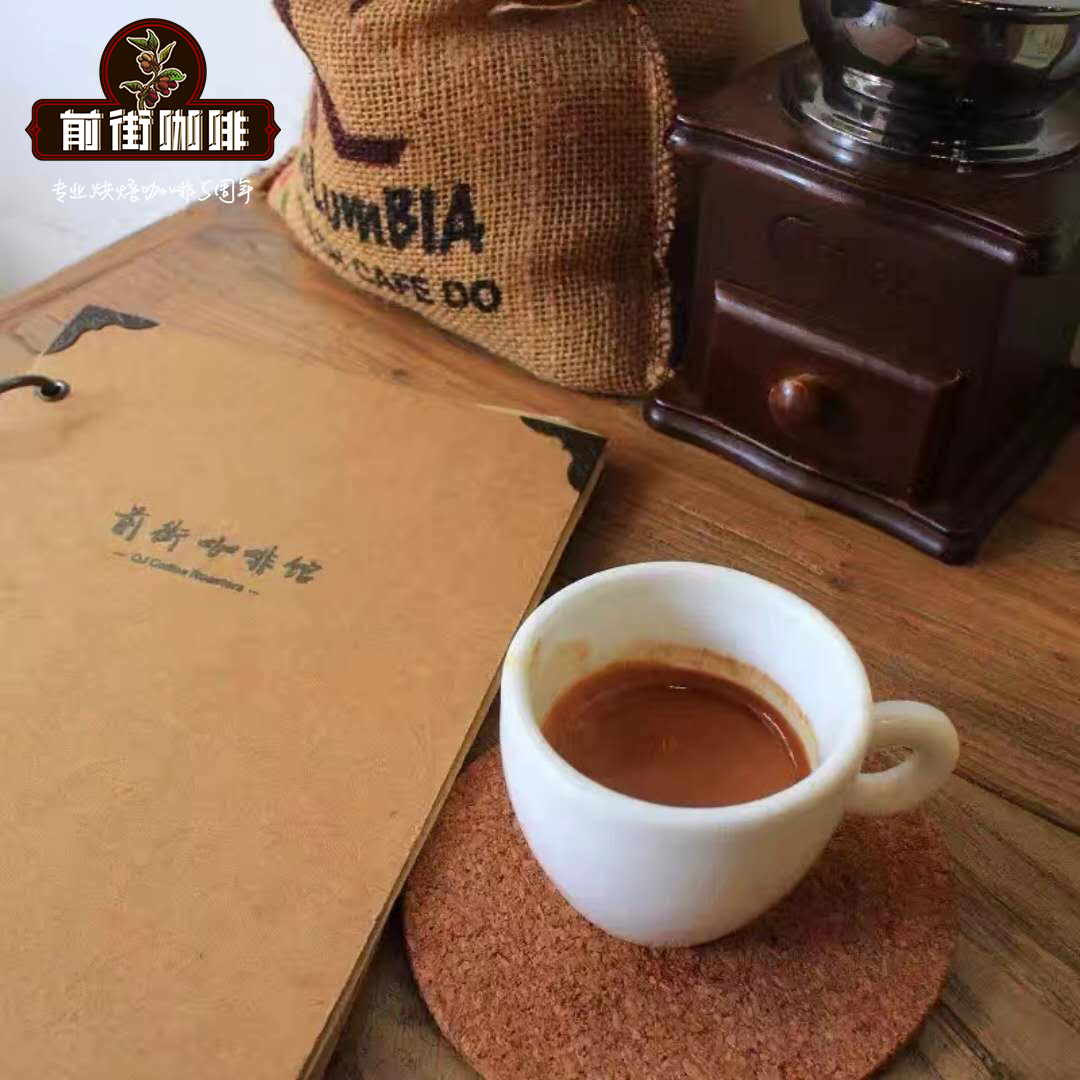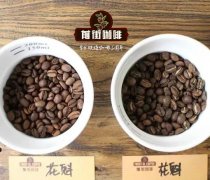Flavor and characteristics of Yelsa Farm Yellow Honey treatment in Yelsalo Manor, Costa Rica?

Professional coffee knowledge exchange more coffee bean information please follow the coffee workshop (Wechat official account cafe_style)
Flavor and characteristics of Yelsa Farm Yellow Honey treatment in Yelsalo Manor, Costa Rica? What is the principle of yellow honey?
Costa Rica's famous Yelsa treatment plant (Helsar de Zarcero), established in 2004, has been repeatedly recognized by the extraordinary Cup (cup of excellence), is a world-renowned processing plant.
Operator Se ñ or P é rez Barrantes has more than half a year's experience in coffee planting and processing in the western valley, and is responsible for the exclusive postharvest processing of several high-quality coffee farms in micro-producing areas, dedicated to producing high-quality micro-batch boutique coffee. Yerzaro's coffee estate is located in the Zarcero Mountains at a high altitude in Naranjo County, which is located 60 to 80 kilometers northwest of the capital city of San Jose, in the valley producing area west of West Valley. It has its own unique organic farming method, using local native trees and fruit trees as coffee shade, and using fertilizers that use coffee cherry pulp mixed with molasses, adding fertile soil with high mineral content in neighboring mountain areas and microbial fermentation. organic fertilizer that can enhance the disease resistance of coffee planting was produced, and many different varieties were mixed. Over the years, it has also won many international cup test scores, and won the second place in the first COE in 2007, with a high rating of 91.37 points. In 2010, Coffee Review, a well-known foreign coffee scoring website, scored 92 points for three consecutive months in the same year. In 2012, Coffee Review scored 91 points again for this batch of raw coffee beans, which once again proved the extraordinary value of the raw coffee beans produced by the estate.
In 2007, a major event in the coffee industry, Costa Rica finally joined the CoE international competition.
It should be included that this impact is immediate and not only brings boundless encouragement to the country's excellent coffee farmers.
It also gives more coffee consuming countries more direct access to good coffee from Costa Rica.
Domestic and foreign media have published a total of more than 100 reports before and after the first Columbia CoE Competition, and this benefit is even more difficult to estimate.
Variety Catuai Kaduai Caturra Kaddura
Plant 1750 meters above sea level
Costa Rica can be said to be a model producer of boutique coffee and micro-batch coffee!
More than a decade ago, coffee farmers in the country began to set up their own micro-processing plants. Through the improvement of quality year by year, to maintain the distinction with the general commercial Dazong beans, to get a better price, and then to provide better coffee raw beans.
Yerzaro treatment Plant is a standard medium-sized processing plant in Costa Rica, established in 2004.
It has more than 30 years of experience in planting and treatment in the western valley.
Committed to the production of high-quality products for batches of coffee.
The manor is located in the high-altitude Salthello Mountains of Orange County.
It is located in the western valley northwest of the capital San Jose.
It is not only a model of local treatment plant.
It has also been repeatedly recognized in international awards:
In 2007, he won the high praise of Cup of Excellence (COE) 91.37 points, and became famous for the good results of the second runner-up.
In 2010, he scored 92 points in Coffee Review for three consecutive months in August, September and October of the same year.
In 2011, the Canadian Coffee Masters Championship won the championship with 651 points and represented the country at the Vienna World Series the following year.
In 2012, Coffee Review scored another 91 points, which not only proved once again that Yerzaro processing plant produces excellent raw beans, but also indirectly affirmed its stable quality.
Producing area: tangerine county city in the western valley
Producer: Yelsa treatment plant
Treatment: honey treatment
Grading: European extremely hard beans SHB
Flavor description: syrup, floral aroma, almonds, black tea, oranges and sweet spices.
Treatment of yellow honey in Yelsa treatment Farm of Costa Rica
Costa Rica is an exemplary producer of fine coffee and micro-batches of coffee.
More than a decade ago, many coffee farmers began to set up their own micro-processing plants.
By constantly improving the quality of our coffee beans year by year, we can keep the difference from ordinary commercial Dazong beans.
To get a better price on the market and provide more excellent coffee raw beans.
Yelsa treatment plant is a standard medium-sized processing plant in Costa Rica.
It is not only a model of local treatment plant, but also has made great achievements in international listing over the years.
In 2007, it got the high rating of Cup of Excellence (CoE) 91.37.
At that time, he became famous with the good results of the second runner-up.
In 2010, the scores of foreign famous coffee in August, September and October of the same year
Coffee Review scored 92 points for three months in a row
In 2011, the Canadian Coffee Masters Championship won the championship with 651 points.
Represent the country in the Vienna World Series the following year
In 2012, Coffee Review got an excellent rating of 91 points for this batch of raw coffee beans.
It also proves once again the extraordinary value of the raw coffee beans produced by the Yelsa treatment plant.
Important Notice :
前街咖啡 FrontStreet Coffee has moved to new addredd:
FrontStreet Coffee Address: 315,Donghua East Road,GuangZhou
Tel:020 38364473
- Prev

Description of flavor and distribution of producing area of Ye Jia Xuefei Aduo
Professional coffee knowledge exchange more coffee bean information please follow the coffee workshop (Wechat official account cafe_style) Ethiopia sun Yega Xuefei G1 Adoduo cooperative what are the characteristics? National Ethiopian producing areas: Godio, Cochare, Aduoda 2000 2300 meters above sea level, Ethiopian Guyou varieties annual rainfall of about 1800-2000 m
- Next

How does it feel to wash Sidamo G1 honey?
Professional coffee knowledge exchange more coffee bean information please follow coffee workshop (Wechat official account cafe_style) washing: Grade-1;Grade-2 (G1G2) Sun: Grade-1 and Grade-3Grade-5 (G1G3G4G5) production area: Ethiopian Oromia species: Ethiopian native species Haiba: 2000 treatment: washing can be found in Ethiopia
Related
- Detailed explanation of Jadeite planting Land in Panamanian Jadeite Manor introduction to the grading system of Jadeite competitive bidding, Red bid, Green bid and Rose Summer
- Story of Coffee planting in Brenka region of Costa Rica Stonehenge Manor anaerobic heavy honey treatment of flavor mouth
- What's on the barrel of Blue Mountain Coffee beans?
- Can American coffee also pull flowers? How to use hot American style to pull out a good-looking pattern?
- Can you make a cold extract with coffee beans? What is the right proportion for cold-extracted coffee formula?
- Indonesian PWN Gold Mandrine Coffee Origin Features Flavor How to Chong? Mandolin coffee is American.
- A brief introduction to the flavor characteristics of Brazilian yellow bourbon coffee beans
- What is the effect of different water quality on the flavor of cold-extracted coffee? What kind of water is best for brewing coffee?
- Why do you think of Rose Summer whenever you mention Panamanian coffee?
- Introduction to the characteristics of authentic blue mountain coffee bean producing areas? What is the CIB Coffee Authority in Jamaica?

